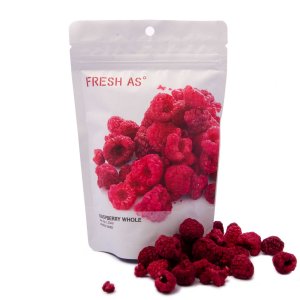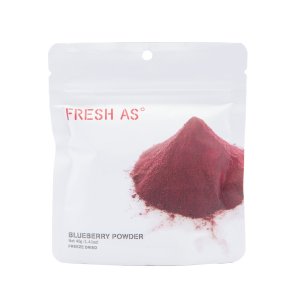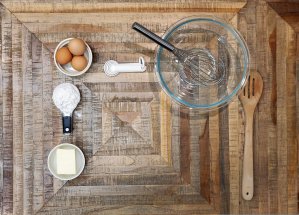Let us head back to the very basics of baking. Baking is a chemistry and few people understand it. It can be daunting when you're first starting - are my measurements correct? How do I keep my fruit from sinking to the bottom? We answer these questions and more in this blog, including recommendations of what you need to ensure you're well equipped and ready to go.
Cooking is an art form and baking is a science that requires precision and order. This can be scary for many bakers who are just starting out. Unlike cooking, which is very fluid and you can swap out ingredients for others, baking can leave little room for error and if the recipe is not followed to a T, you may end up with a crumbled heap that looks nothing like the photo. This discourages many people from continuing further but it doesn't have to be that way. That is why we have compiled a list of handy baking tips to help you be more confident in the kitchen.
Ever wondered how your favourite raspberry loaf has raspberry pieces all through the batter? It is because they're coated in flour beforehand. This prevents your tasty additions from sinking to the bottom and allows for even distribution, giving you a flavoursome bite every time. It is a handy tip for frozen fruit, especially, as they are understandably heavier than fresh fruit and can leak out their colours more throughout the batter when baking.
If you want fruit pieces that you can add straight in without the flour method, we recommend using the Fresh As fruit pieces and crumbles. They are dehydrated and ready to go. Add a handful into your next lot of baking. Want the flavour but not the fruit pieces themselves? Try our Fresh As fruit powders which are incredibly flavoursome and you need only a smidge. A small bit will go a long way.



Many recipes call for this step and there is a good reason why. It enables you to achieve a light, fluffier texture within your baking when done correctly. The creaming process aerates the mixture and provides structure to your cake or baked goods. When it hasn't been mixed enough, you will find that the final result is dense and soggy.
A handy rule of thumb if you're unsure whether it has been creamed enough is to smooth it in between your thumb and index finger. If it feels grainy then you need to keep going. You want it nice and smooth.
You may feel inclined to mix everything in until fully incorporated and then mix a little more just to be sure. We get it, it is the logical and safe thing to do. But you don't need to. When your recipe calls for you to "mix until just combined", you need to do as it says. Why? Because, when you over-mix, you are beating out the air pockets within the batter which gives it its rise and the fluffy and light texture that you are after.
Over-mixing will toughen the mixture, resulting in a heavier, more compact baked good. And the tops tend to sink in on themselves after some time, losing the dome-like structure that provides its height.
Silicone mats are a great investment and the preferred alternative to baking paper. A multi-purpose kitchen must-have, they are easy to use and you can use them time and time again. Silicone mats provide a flat, non-stick surface for cookies, macarons, and many other foods. They stay in place as well, so you don't need to worry about the mat slipping off of the tray.
It's a bit of a no-brainer but still worth noting. Sometimes, you don't have the time to wait or you want to just get straight into it. We get it. But it has to be done. Any frosting or decorations will melt right off and become a blubbery mess, rendering your efforts futile and we don't want that. So, remember to give yourself time for the cooling process in between.
Don't get caught off-guard for not having a certain piece of equipment before starting. Make sure that you have everything that you need and the time allocated to complete the recipe. We've lost count of the number of times we've started a recipe before realising we didn't have a certain ingredient or tool. And then, had to race down to the shop to grab what we needed. It will throw you off and leave you dishevelled before you've even started.
Also, do yourself a favour and prep your ingredients with their correct measurements beforehand. This will allow you the time to focus solely on the recipe itself and you don't run the risk of over or under-measuring during the making process.

Temperatures play a big part in how your baking is going to turn out. When a recipe calls for ingredients to be at room temperature, such as butter and eggs, that is because it allows them to blend together seamlessly and develop the proper structure.
Examples of what could go wrong include:
When the butter is too soft, you can't whip up the air necessary to provide that light and fluffy interior. It also melts too fast before the batter is fully cooked, causing your cake to collapse within and cookies to spread and fall flat.
Cold eggs can curdle your batter and cause your cake to become dense and riddled with holes.
If you don't have time to wait, then try the following:
Place your eggs in a bowl of really warm (not hot) water and leave for 5-7 minutes. Do this prior or during your measuring process.
Place a warm bowl or glass over your butter to soften it. Apply the same principle as above with the eggs and you are good to go.
Baking is specific and a cup of flour isn't always a cup. This can make all the difference between a good cake and a great cake. That is where kitchen scales come in. A lot of recipes will include their measurements in grams too so the kitchen scales will provide you with a precise reading. It is a small, inexpensive investment that is totally worth it.
There you have it, a handful of baking tips and tricks to guide and prepare you on your baking journey as a beginner. We know that we have only scratched the surface and there is so much more to learn but these tips will help you to get started and on your way. We hope you feel more confident to get into the kitchen and start baking with a little more knowledge up your sleeve :)